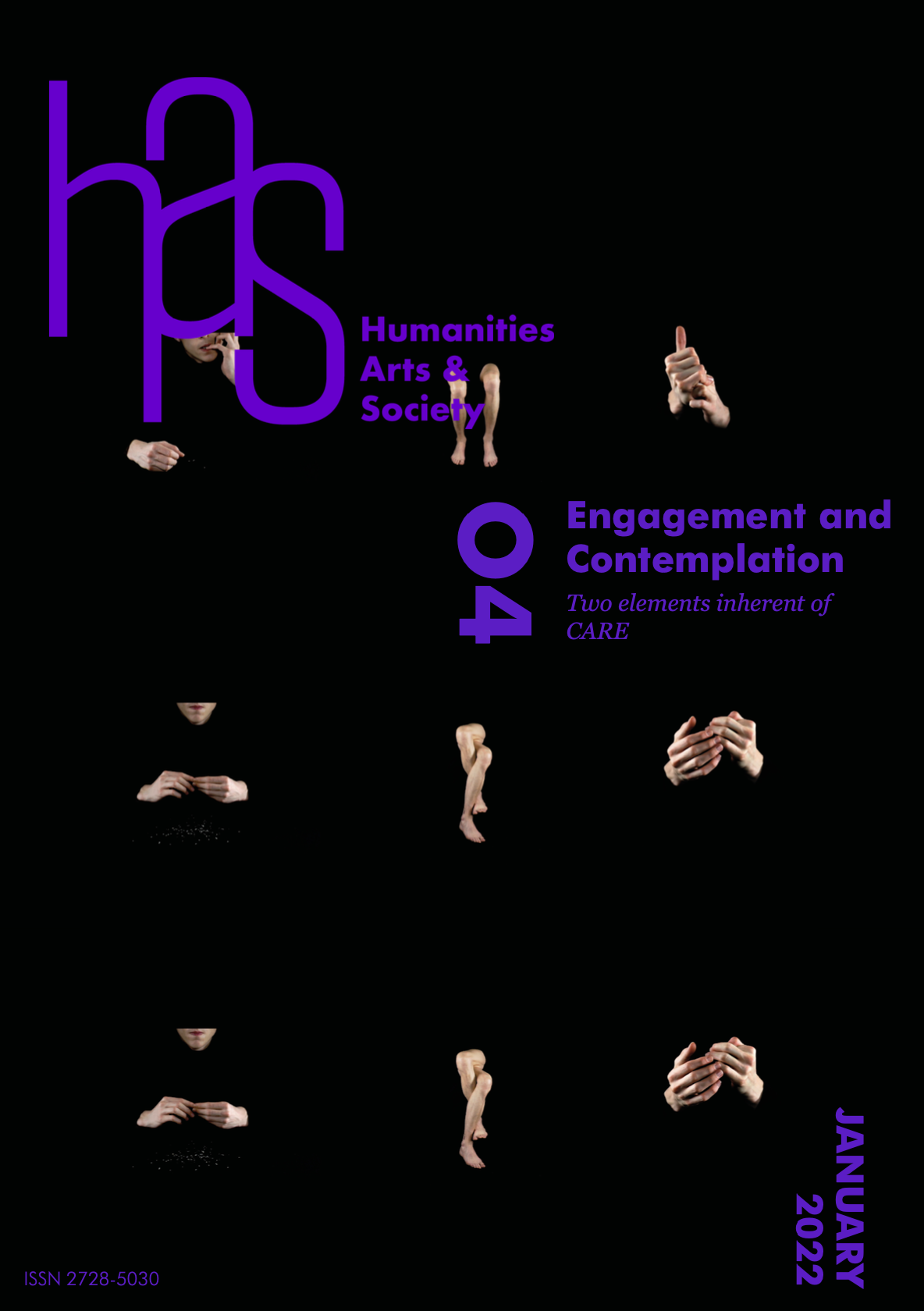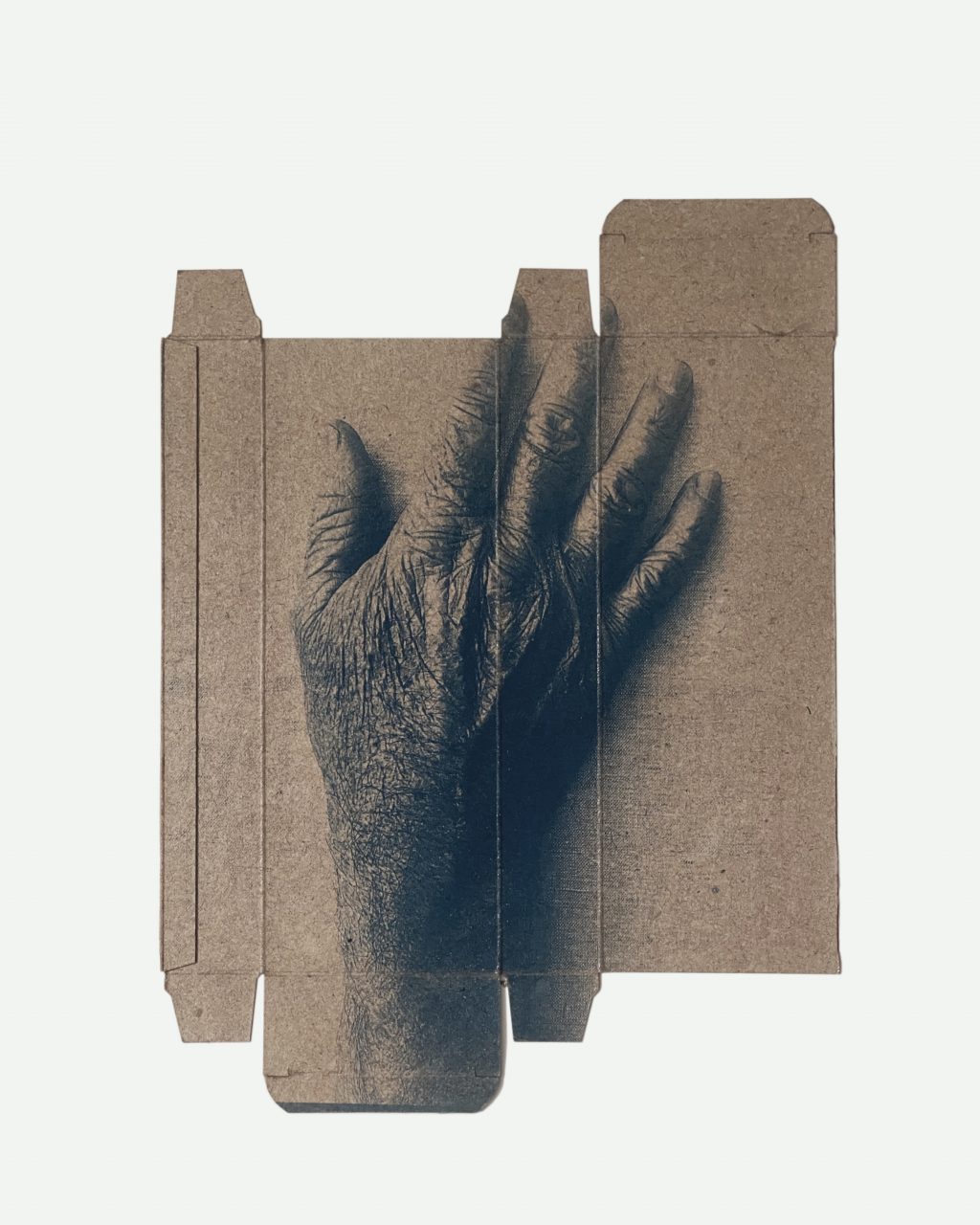
“Others constitute me and make me responsible for them.”
Emmanuel Lévinas
Hands have been present in art since the beginning of time—not only as an extraordinary creative tool, but as a symbol. They appear in the first paintings of Palaeolithic cave art, and have been used to represent very complex notions by civilizations and religions throughout the history of mankind. This series highlights the affective aspect, linked to touch, that passes through the hands—hands that are almost forbidden of use in this time of pandemic.
_____________________________
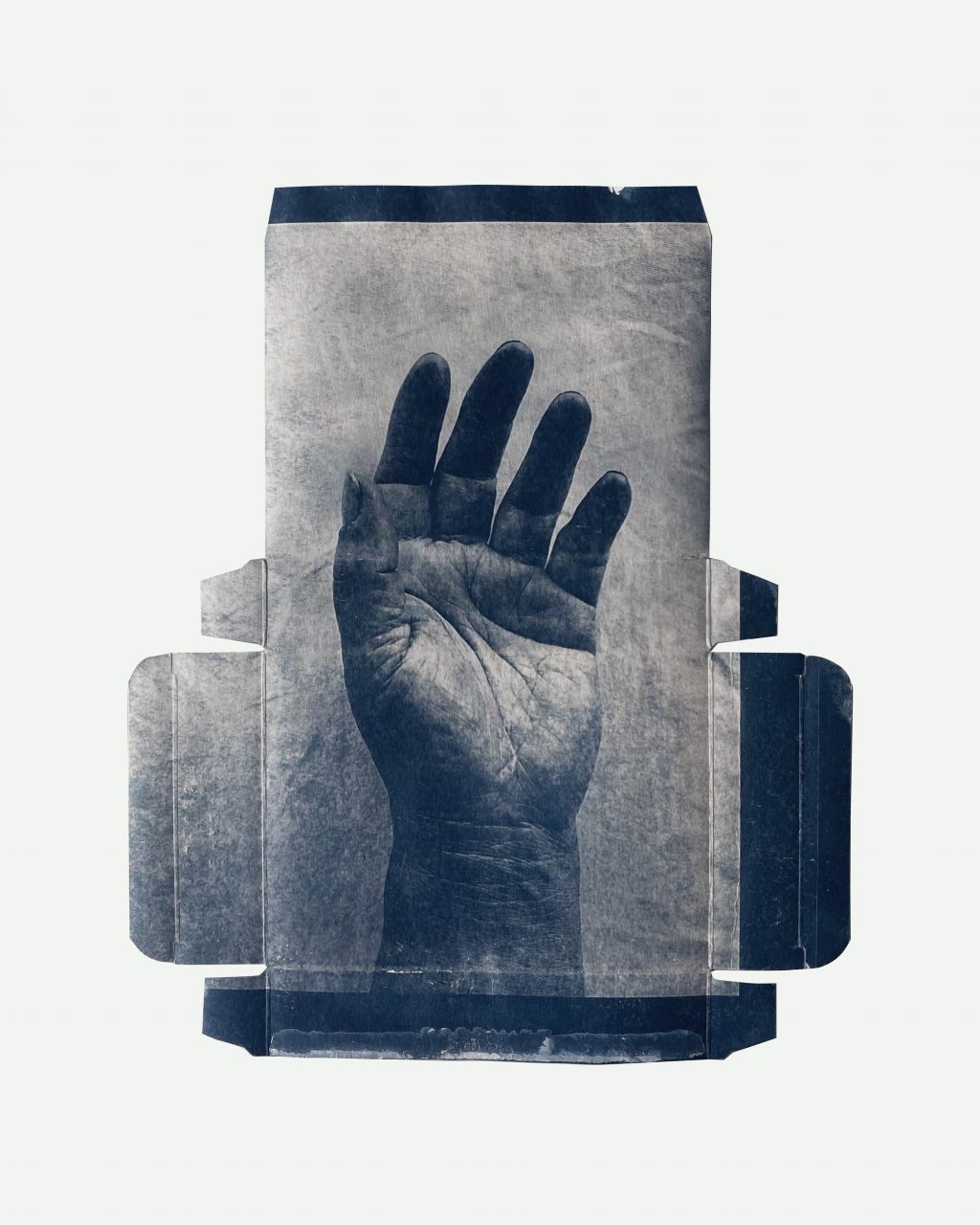
The genesis of .H.A.N.D.S. consists of two essential elements: first, my continuous research and experimentation with the cyanotype (blueprint) technique and its use on unconventional supports, and second, the need to work on a problematic anchored in the current global context—the pandemic that has affected all of us, in one way or another, as a result of social distancing.
I started by photographing the hands of my partner, and in doing so, I thought of all the friendly hands I could no longer touch. Physical contact had become a risk, as well as an enormous deprivation. Caresses, kisses, hugs, a simple handshake, were and still are forbidden to us. As a consequence, I decided to invite my distant friends and family to send pictures of their hands—those hands that have been there, in the past, to help me, to accompany me, to caress me, to support me, to comfort me, to give and also to receive. My close friends gave me permission to photograph theirs. The project thus became a great participative work.
I transform the collected photographs into negatives and then, using the photographic technique of cyanotype, I print them on small cardboard boxes (chocolates, medicines, cereals) that I recycle. Each box contains, in a way, not only a form of the presence of the person photographed, but also a message of love and solidarity.
Reproducing these images, with a photographic technique that is not harmful to the environment, on a modest, unpretentious medium—a paper that is considered waste—is a decision that is part of a research process around photographic techniques that I call humble—they do not need expensive materials or sophisticated equipment. A little basic chemistry and sunlight were enough to make this series, which already consists of over a hundred pieces.
_______
When I was a student at the Bogotá School of Fine Arts, far from home, my mother regularly sent me a cardboard box filled with home-made delicacies, prepared with her own hands—cookies, breads, cakes, cheeses. These cardboard boxes were my mother’s messages of love. Even today, after so many years, I clearly remember the sweet smell they gave off.
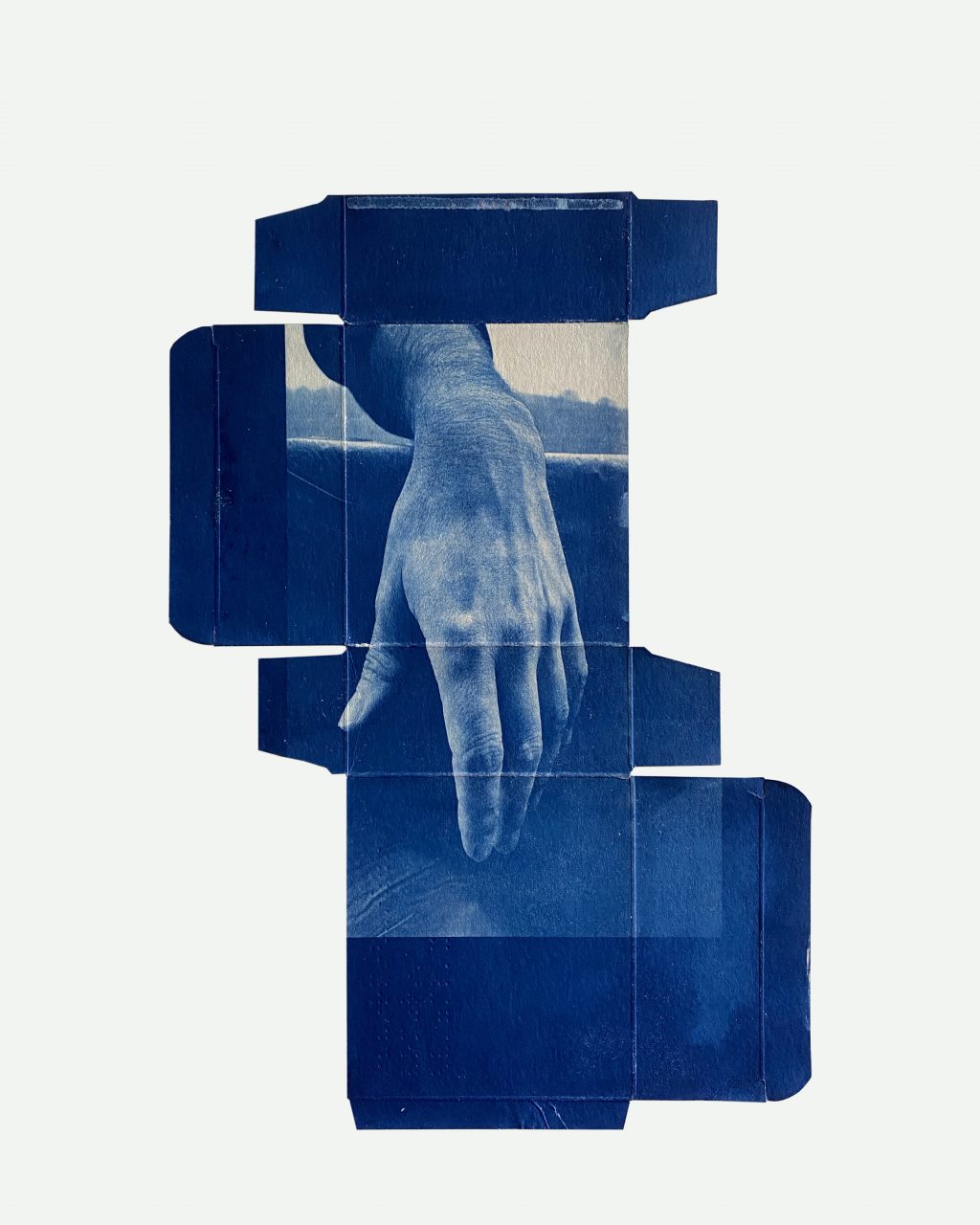
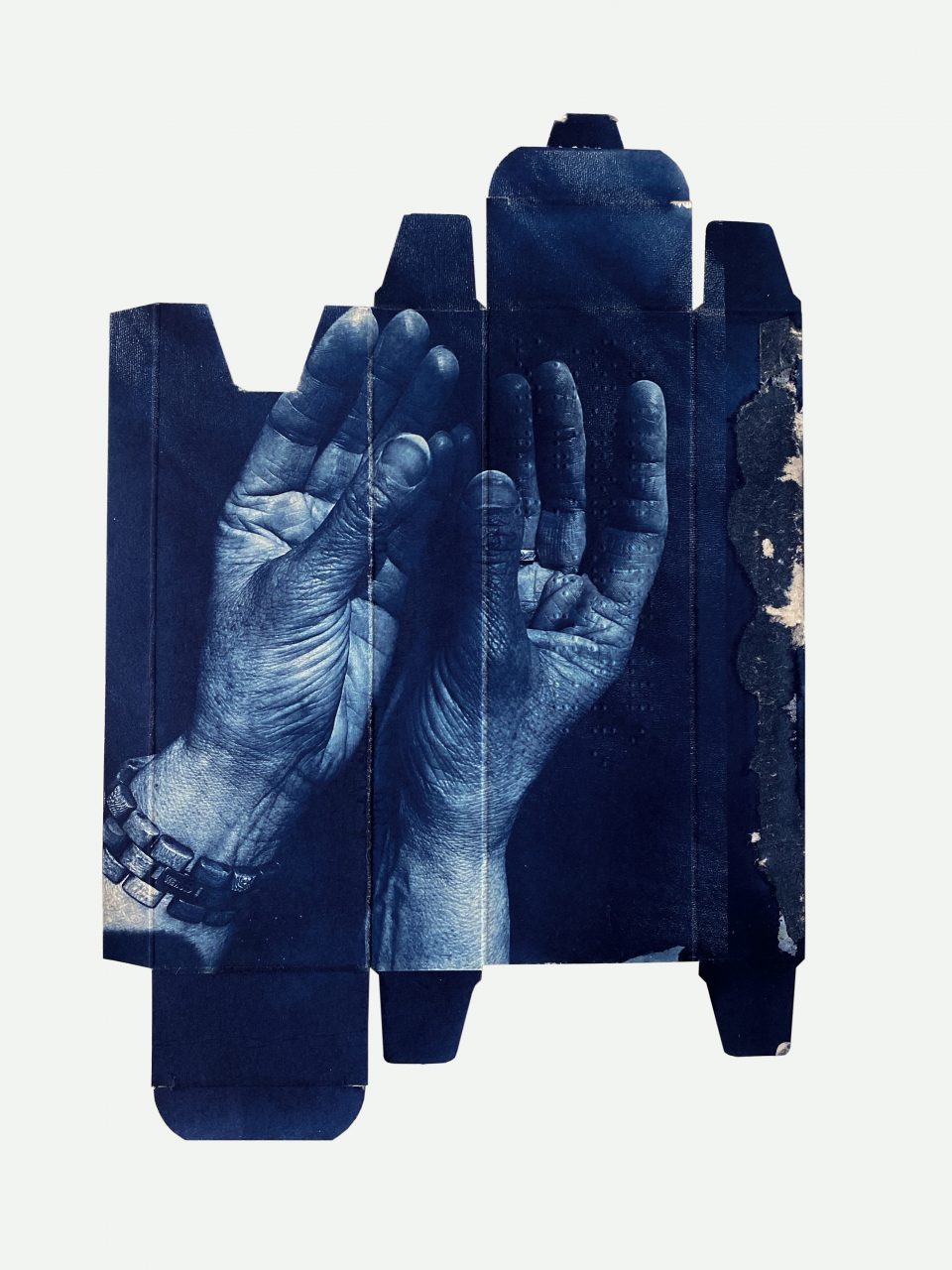
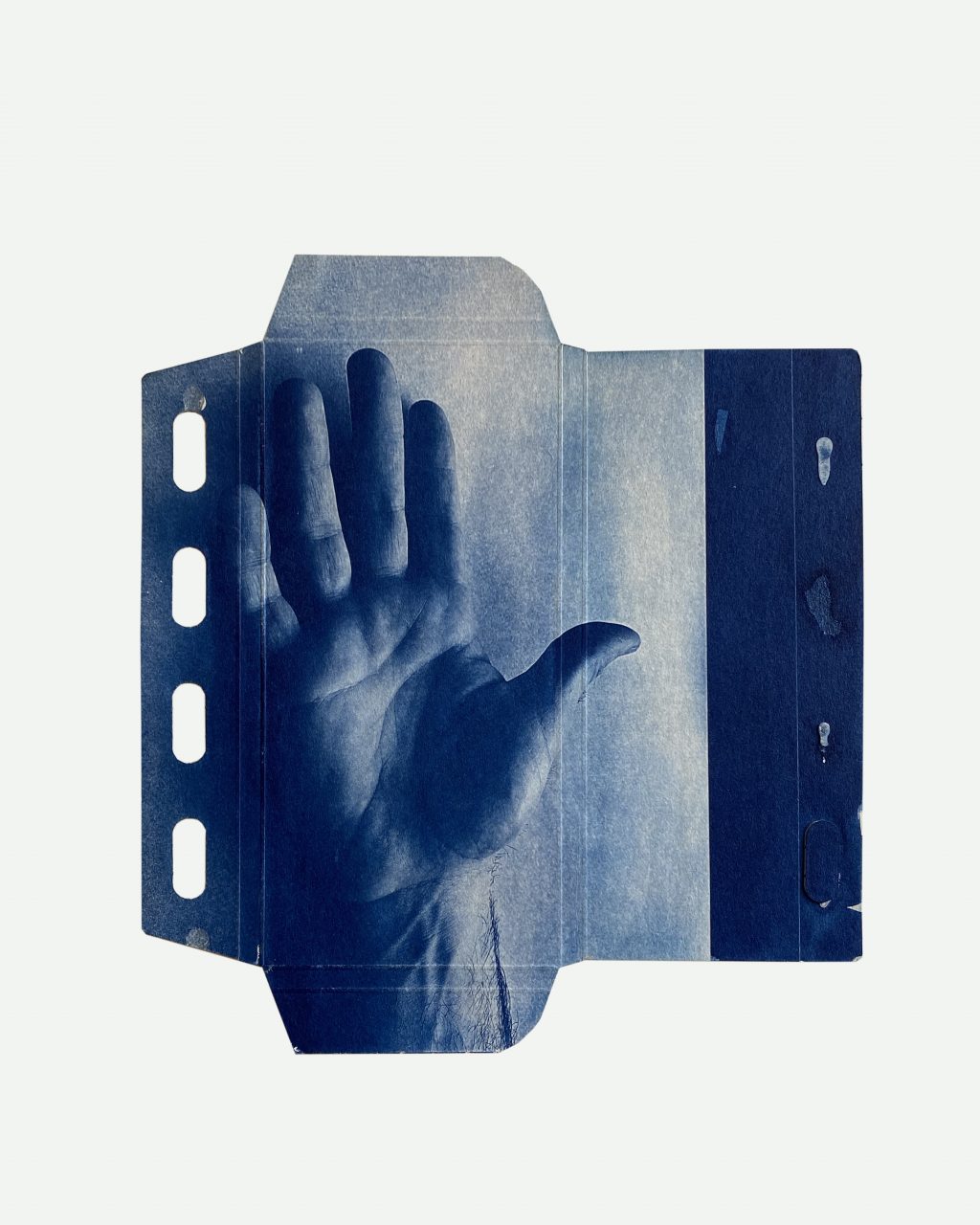
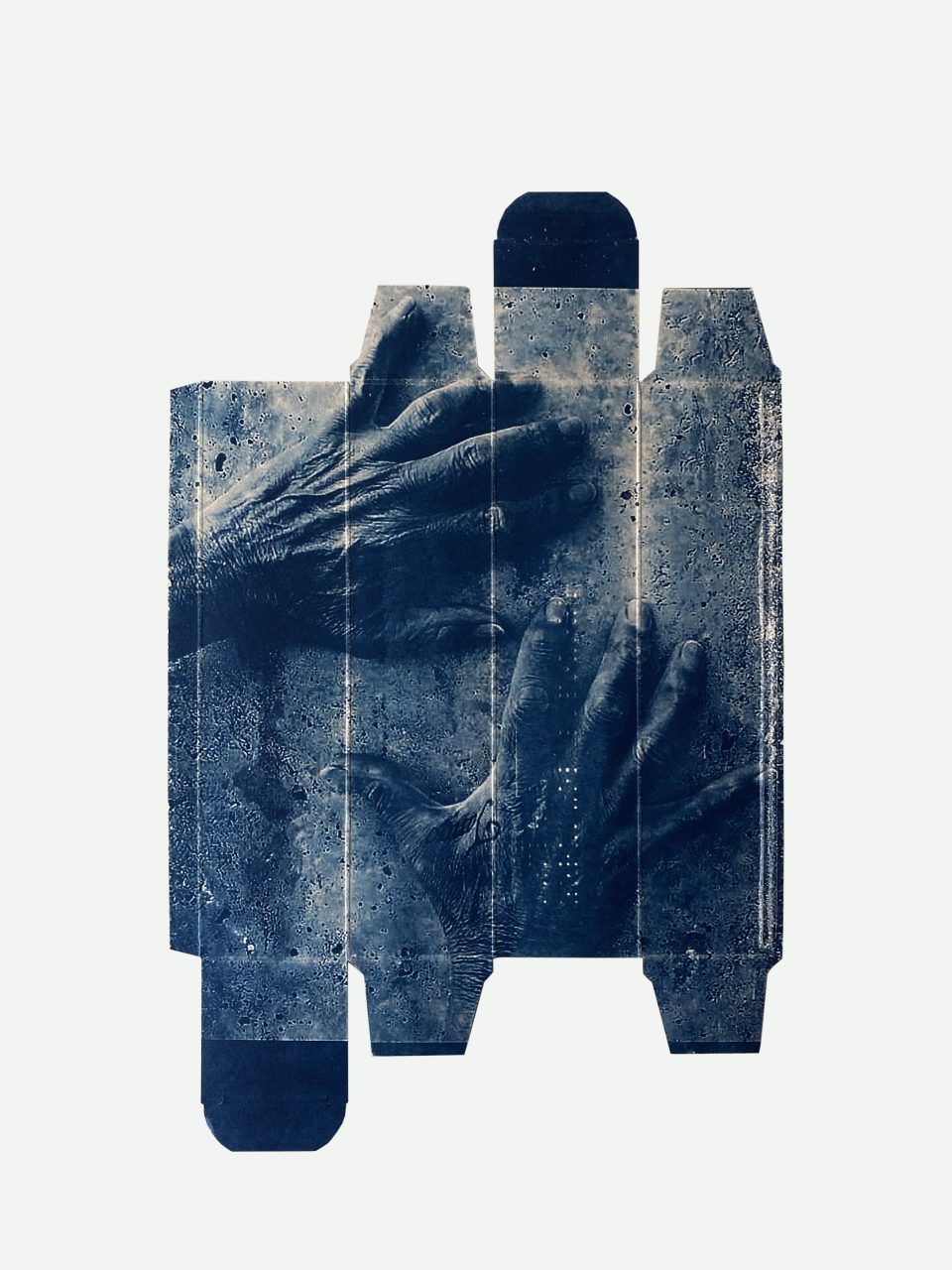
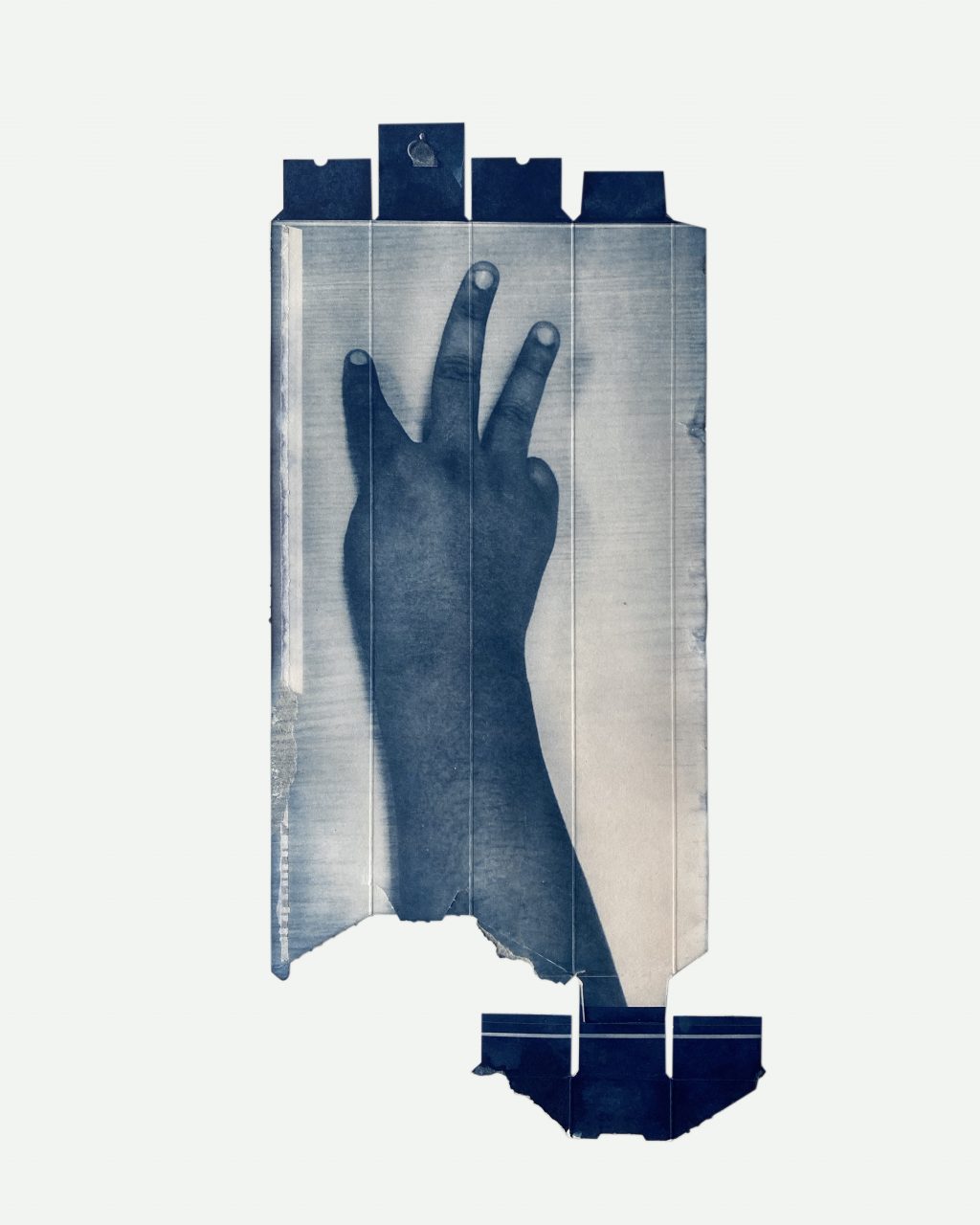
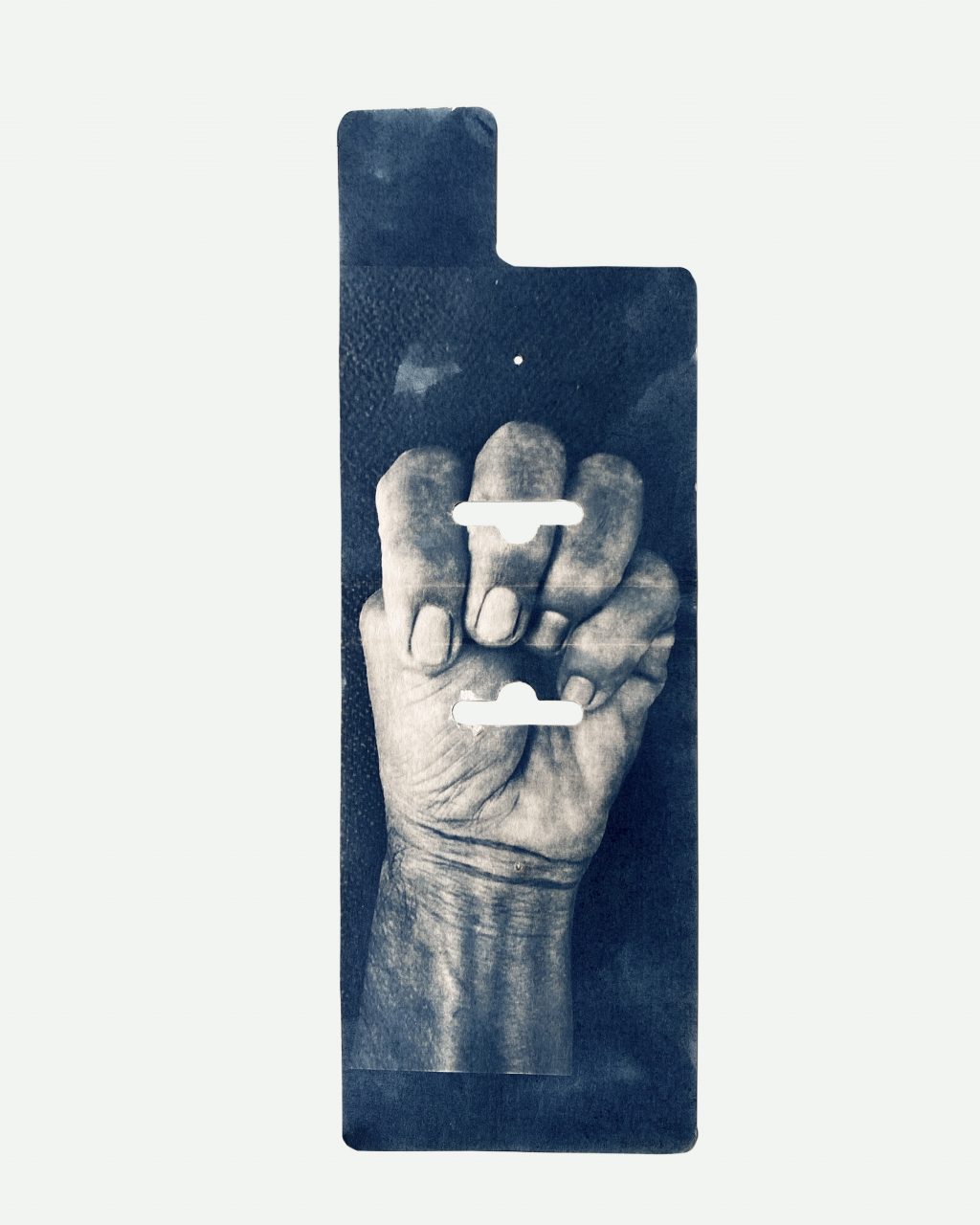
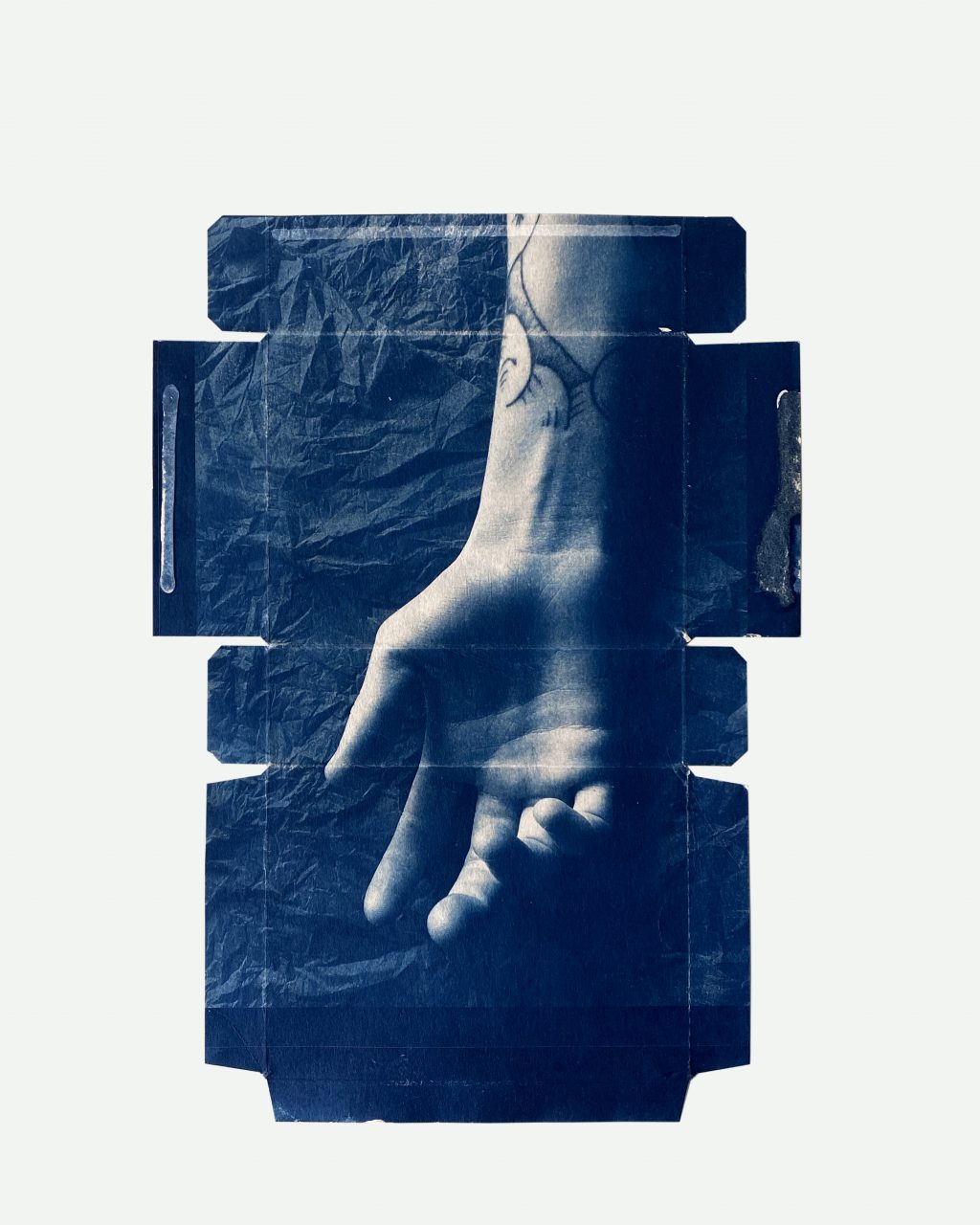
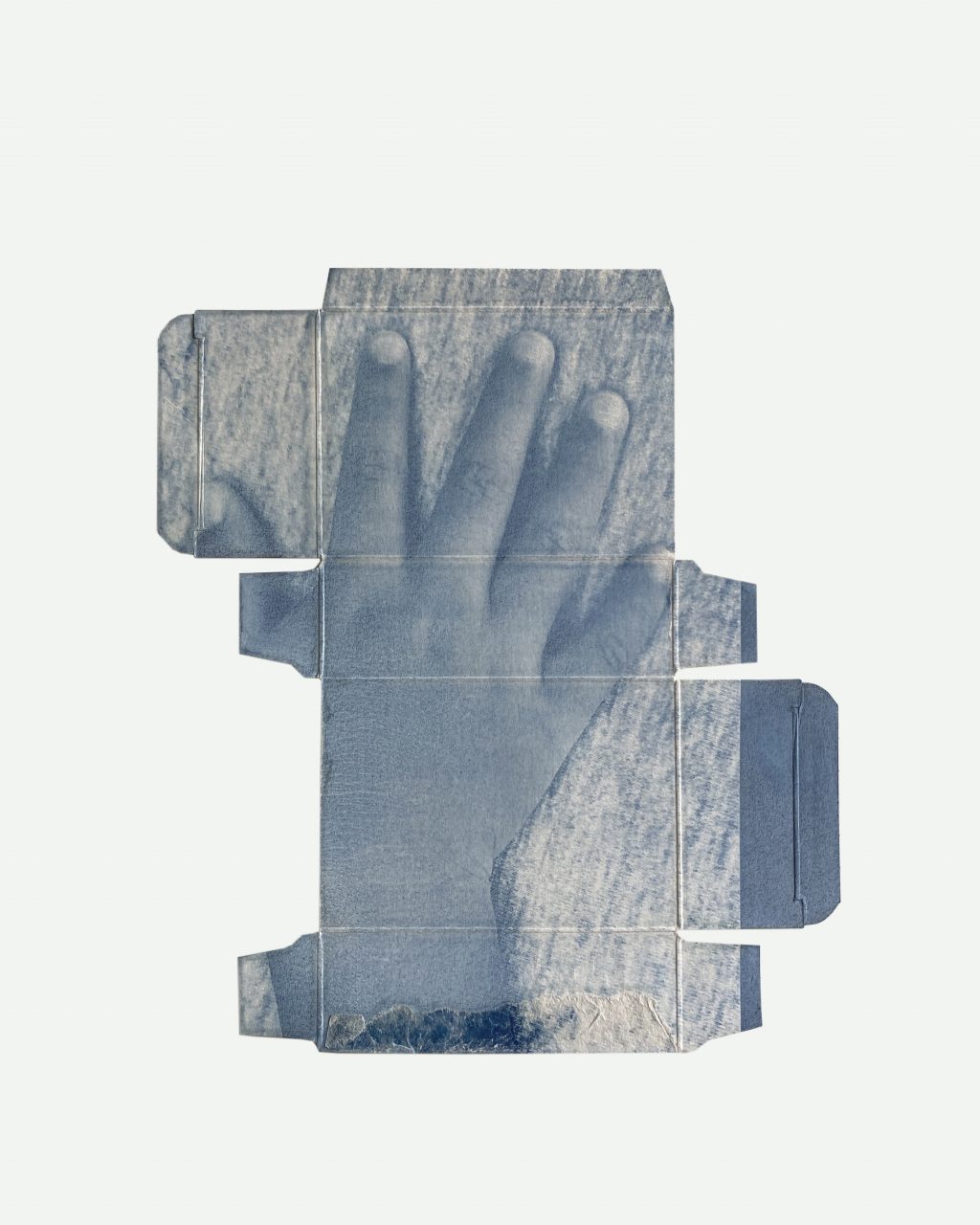
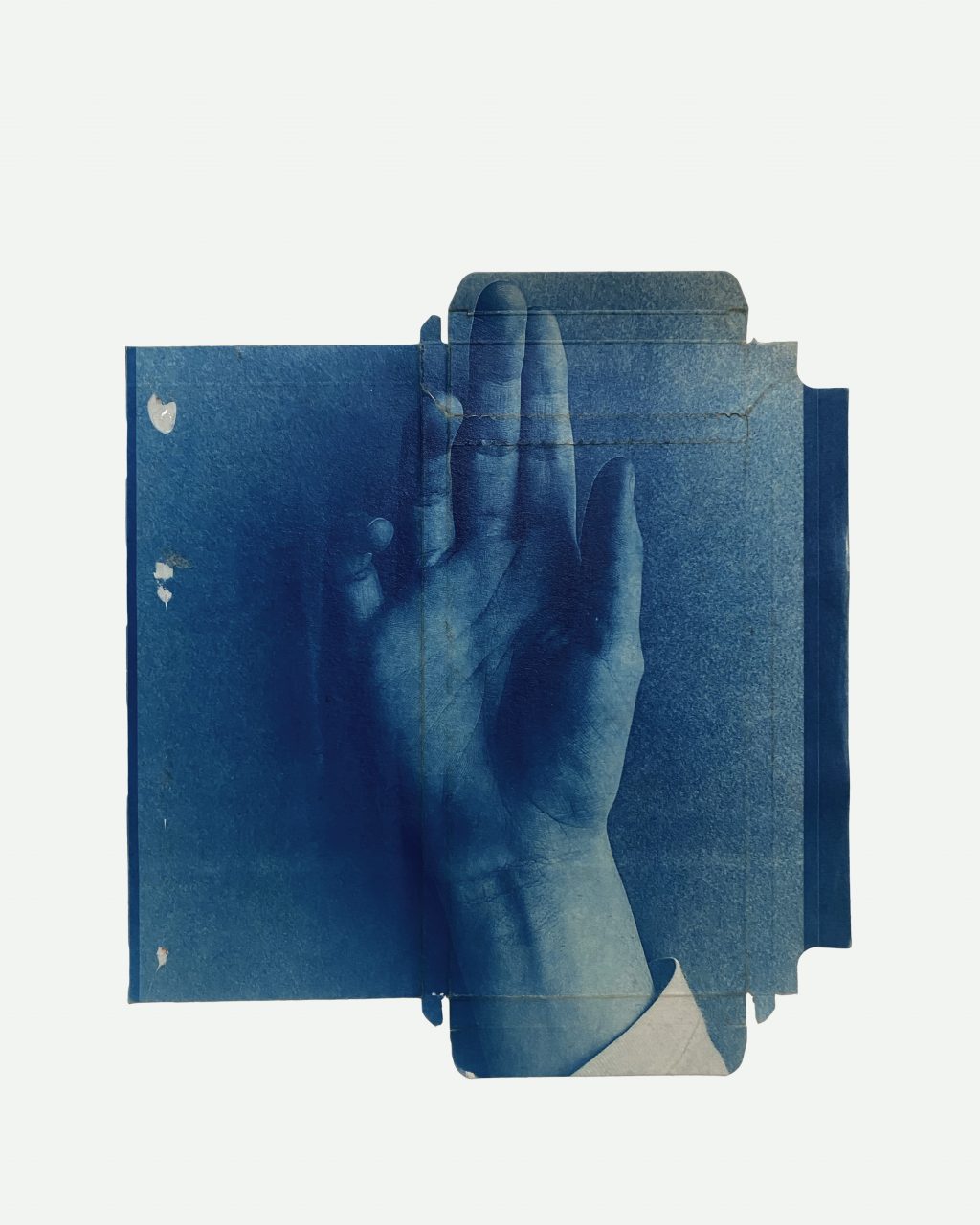
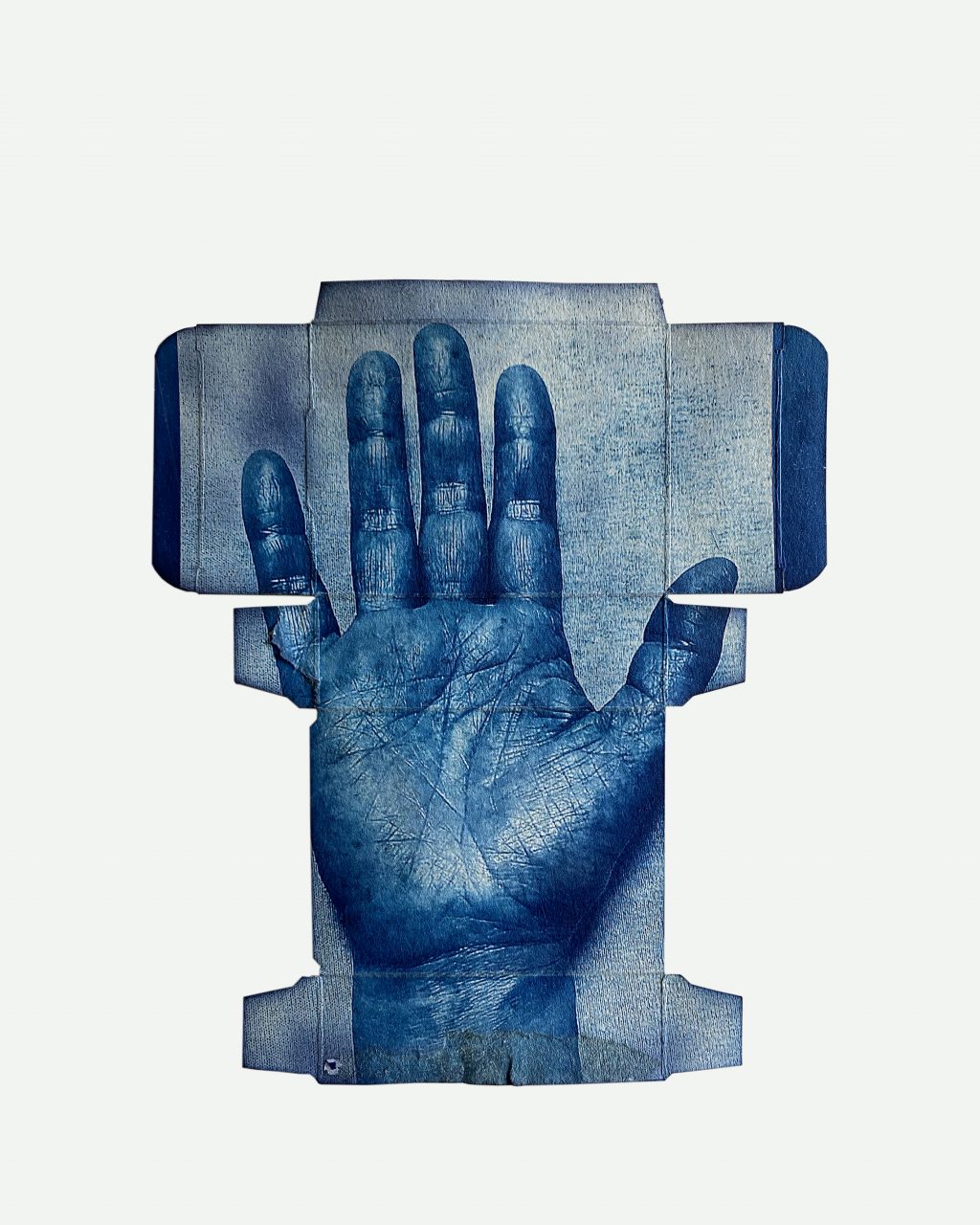
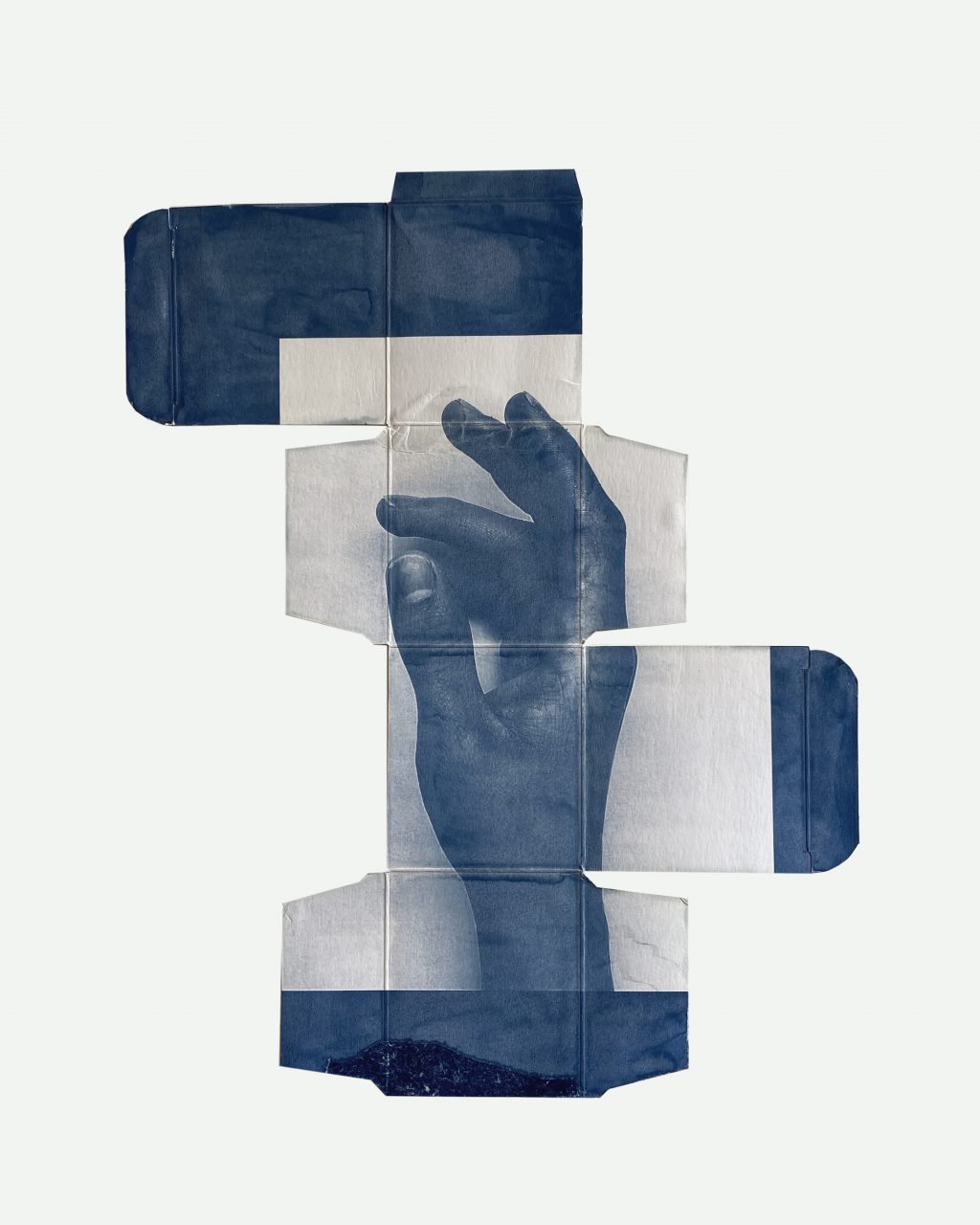
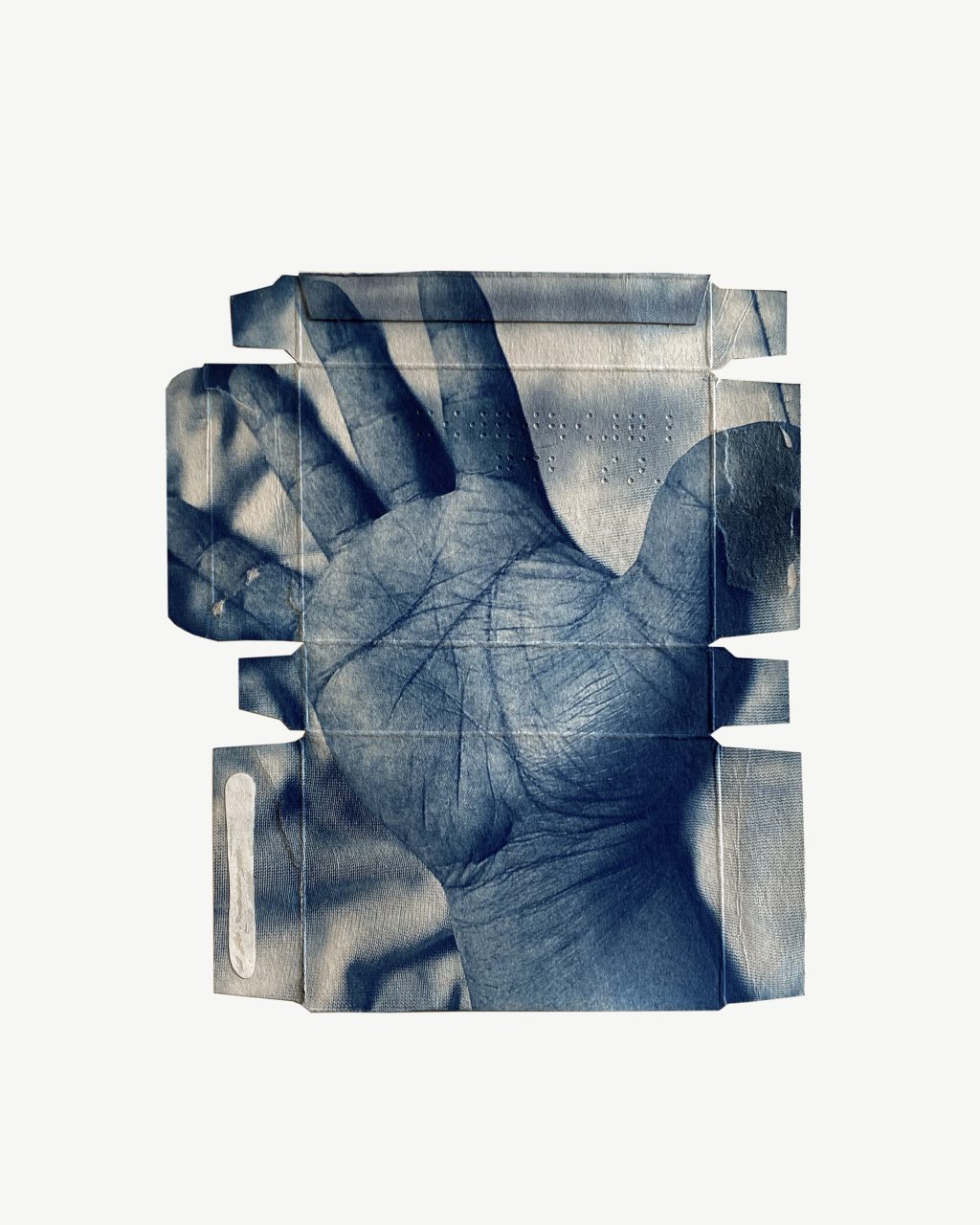
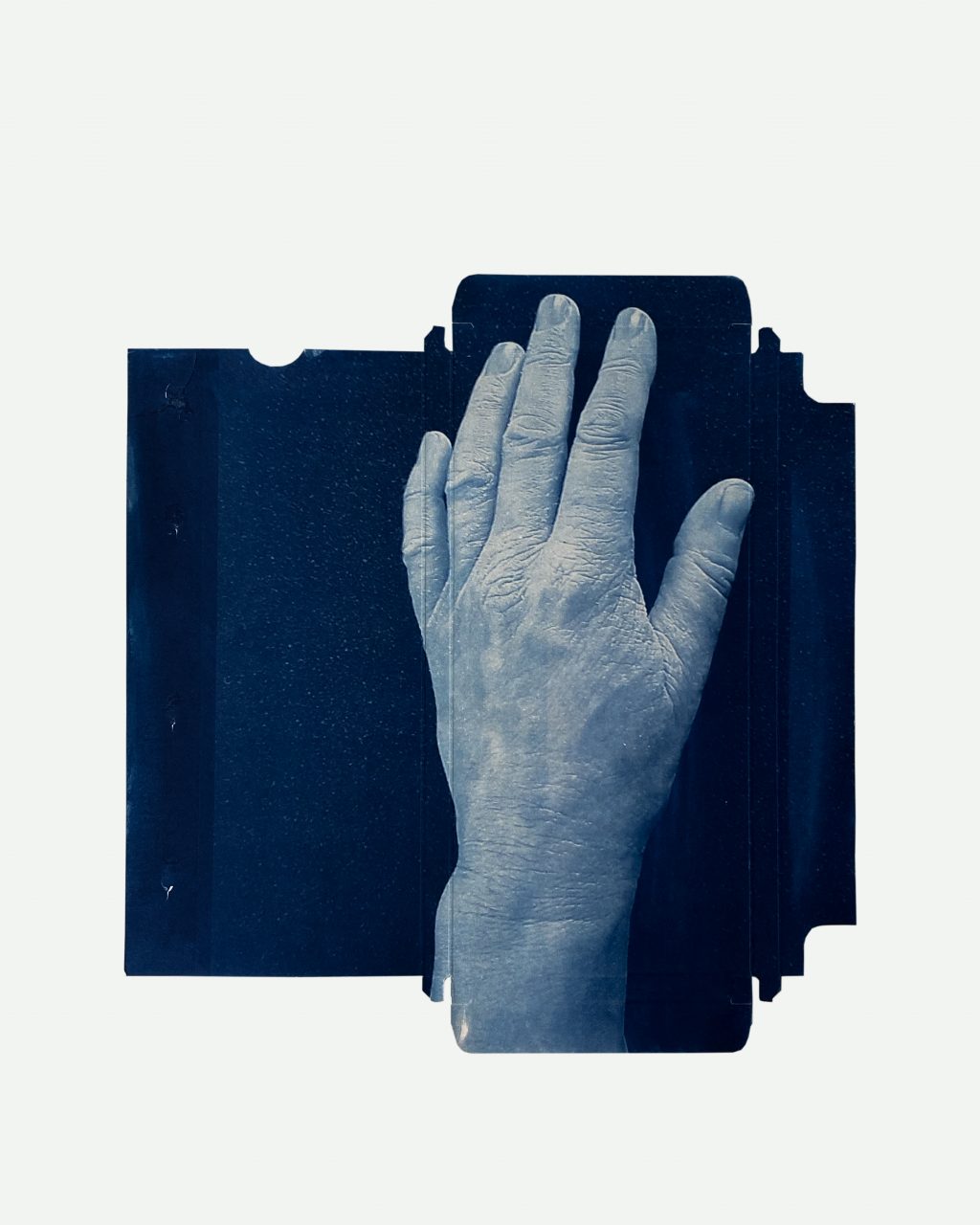
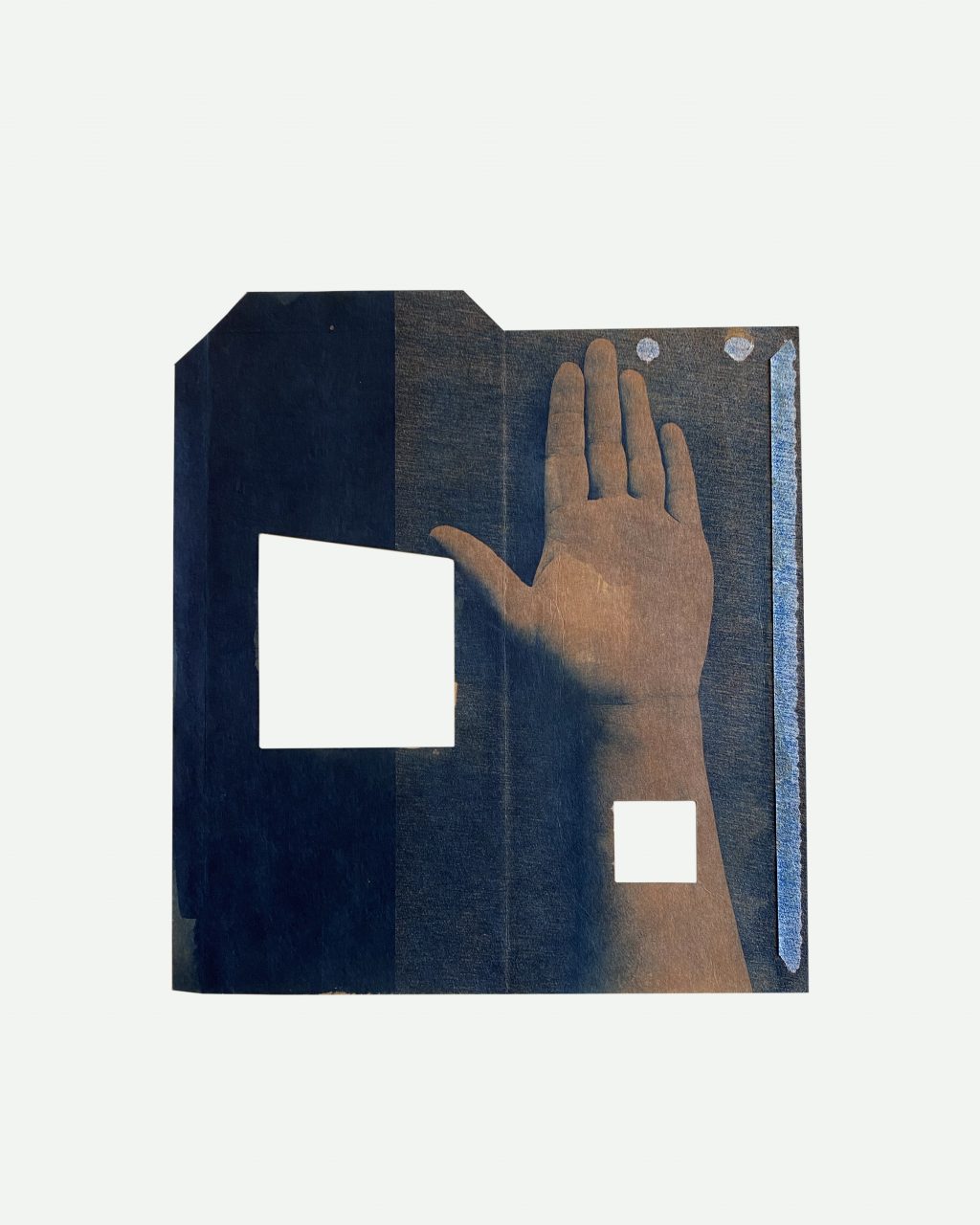
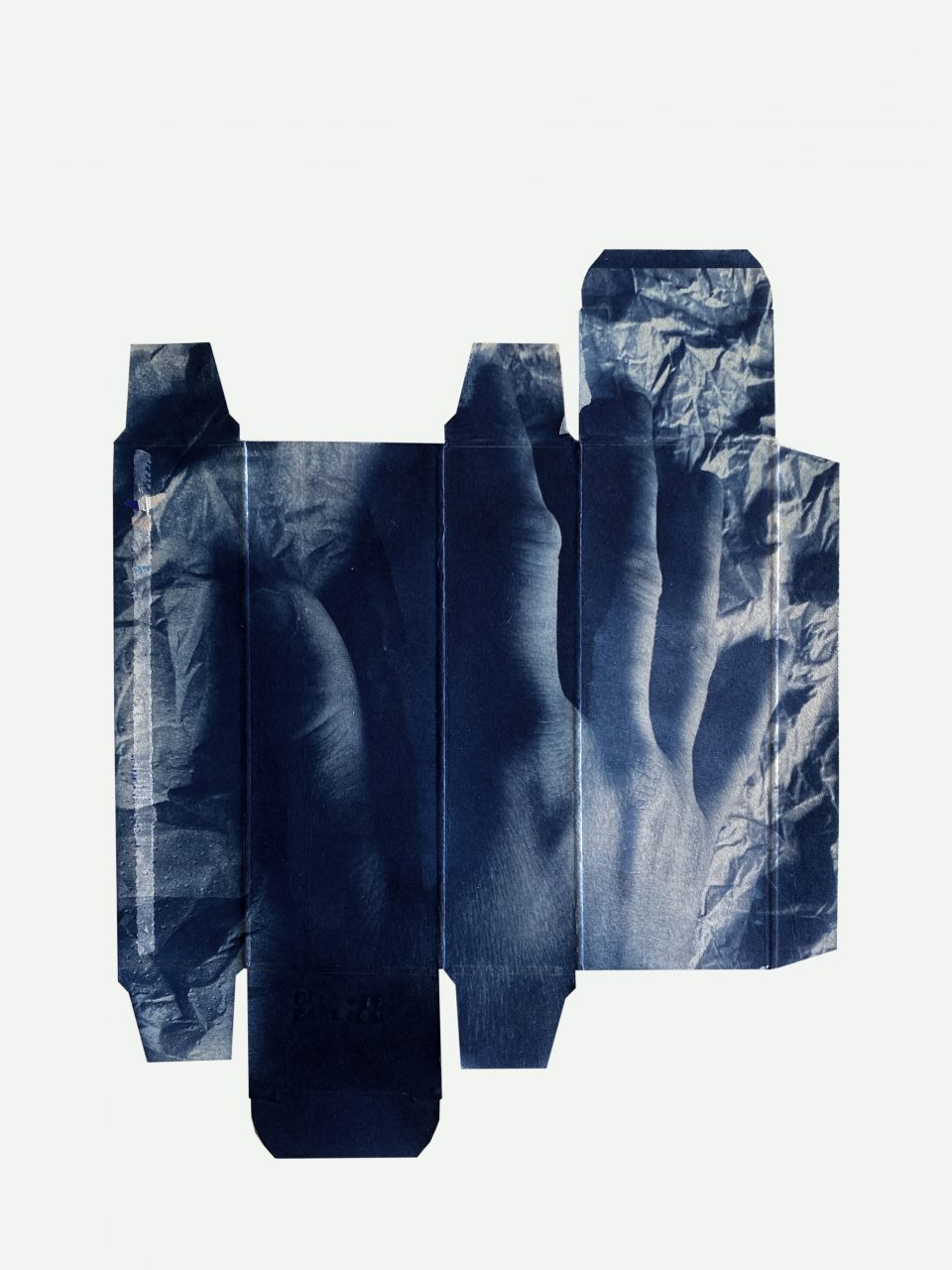


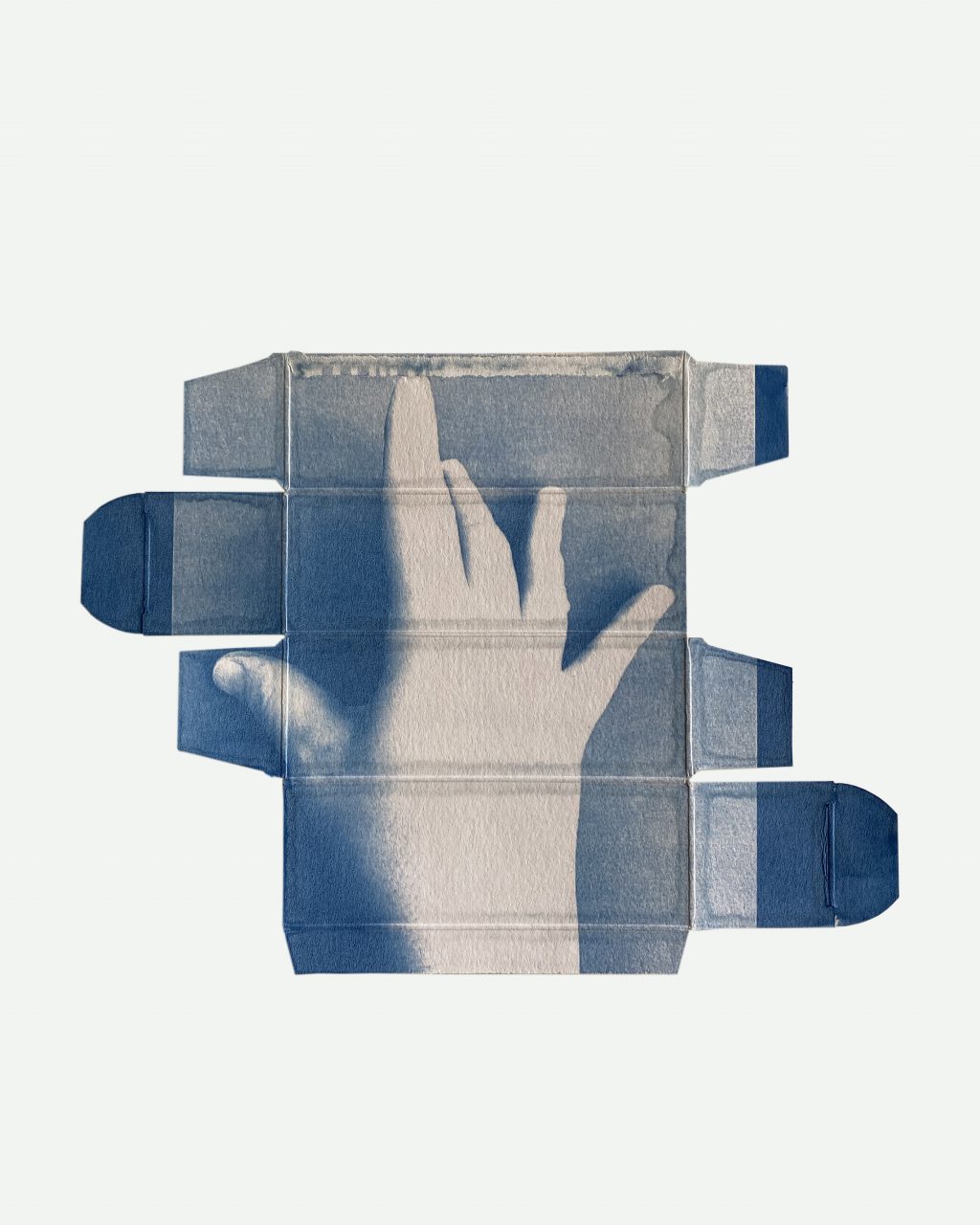
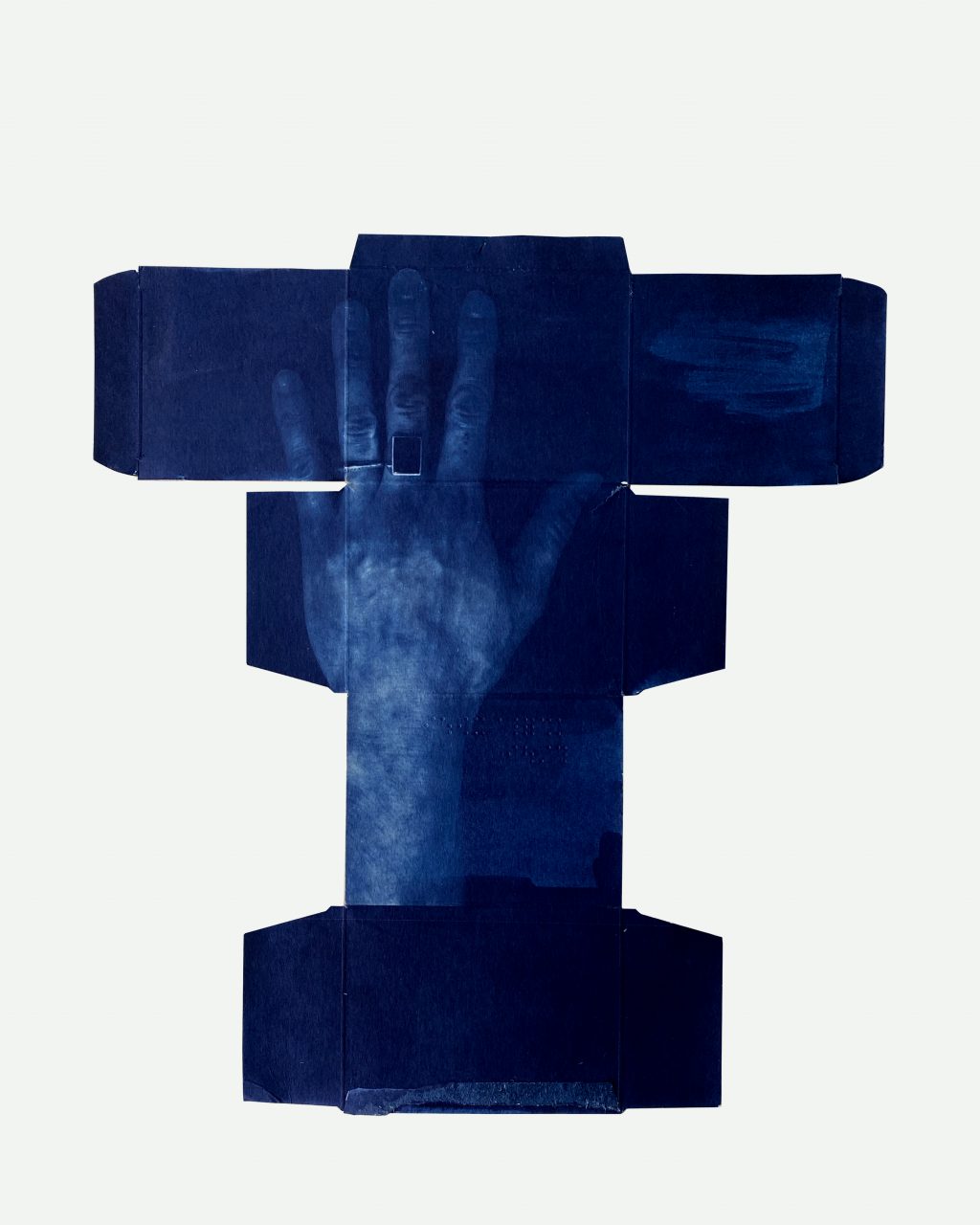
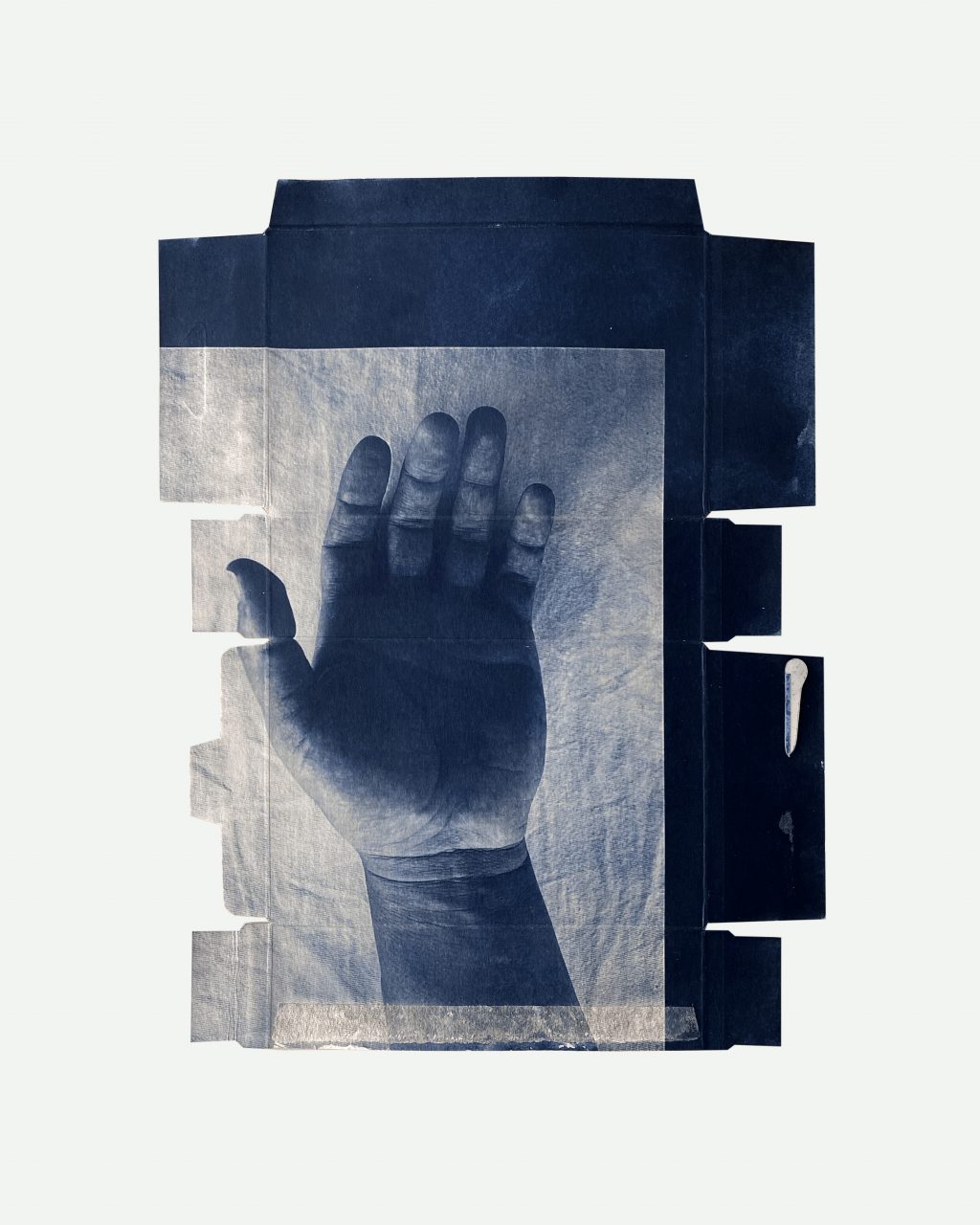
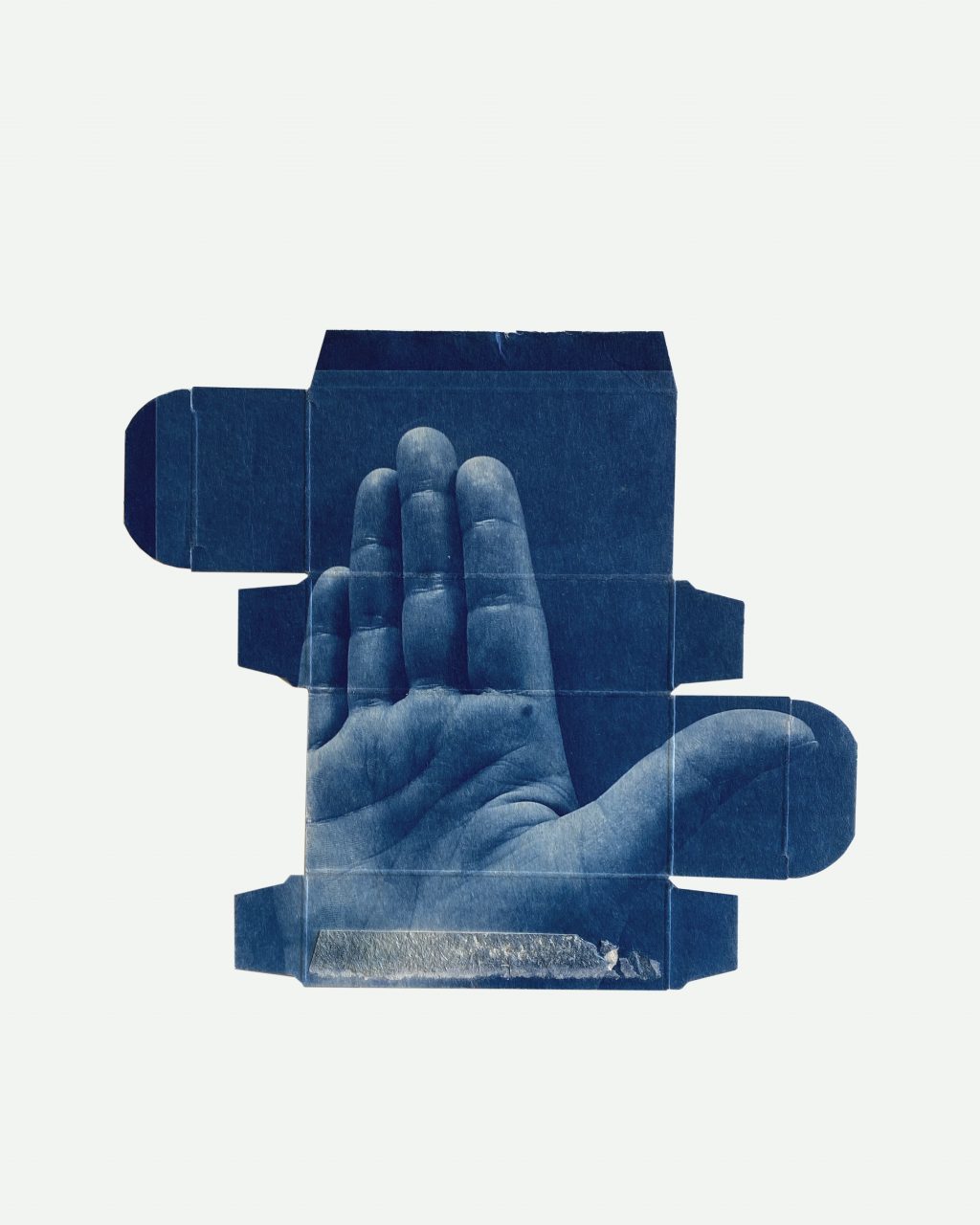
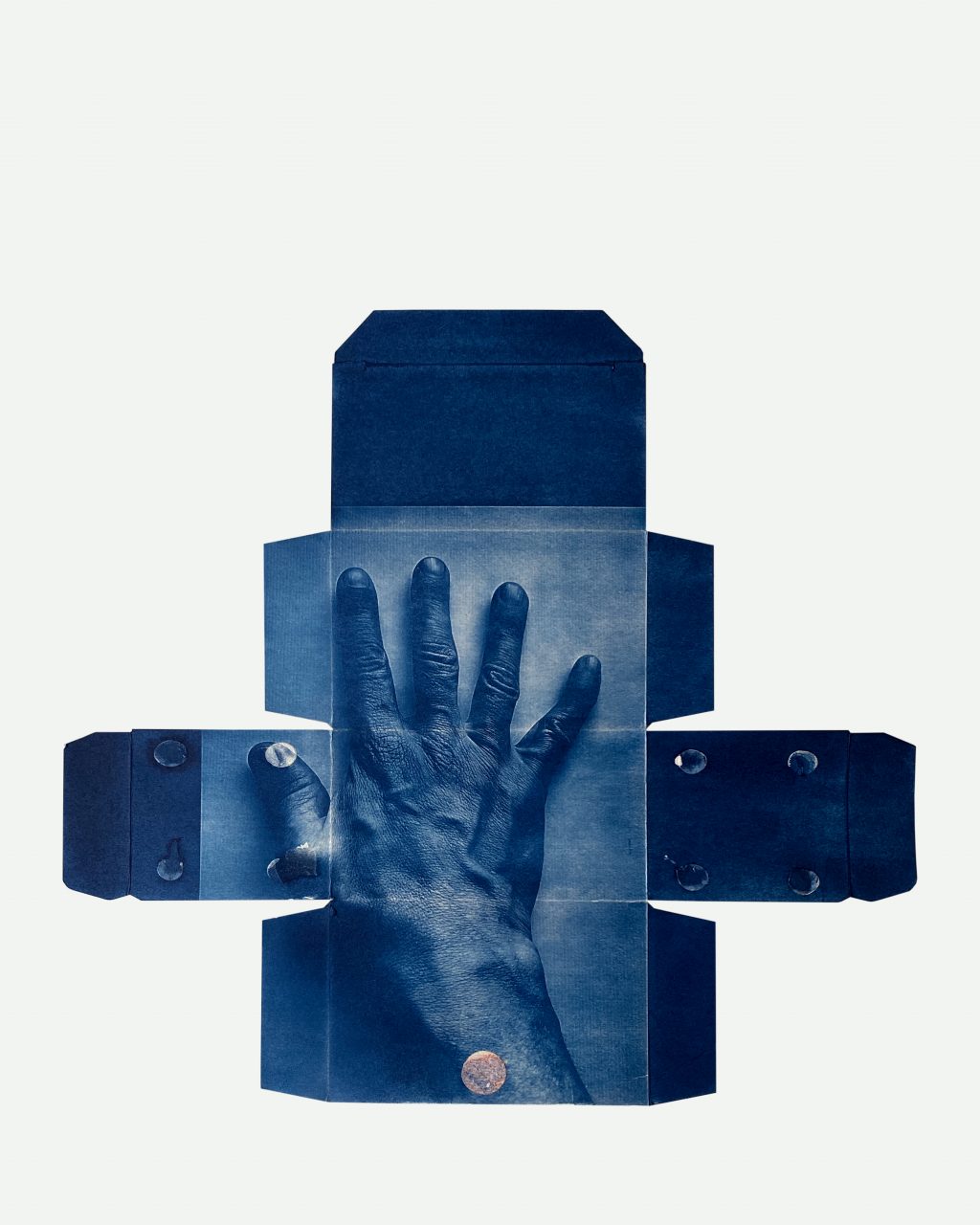
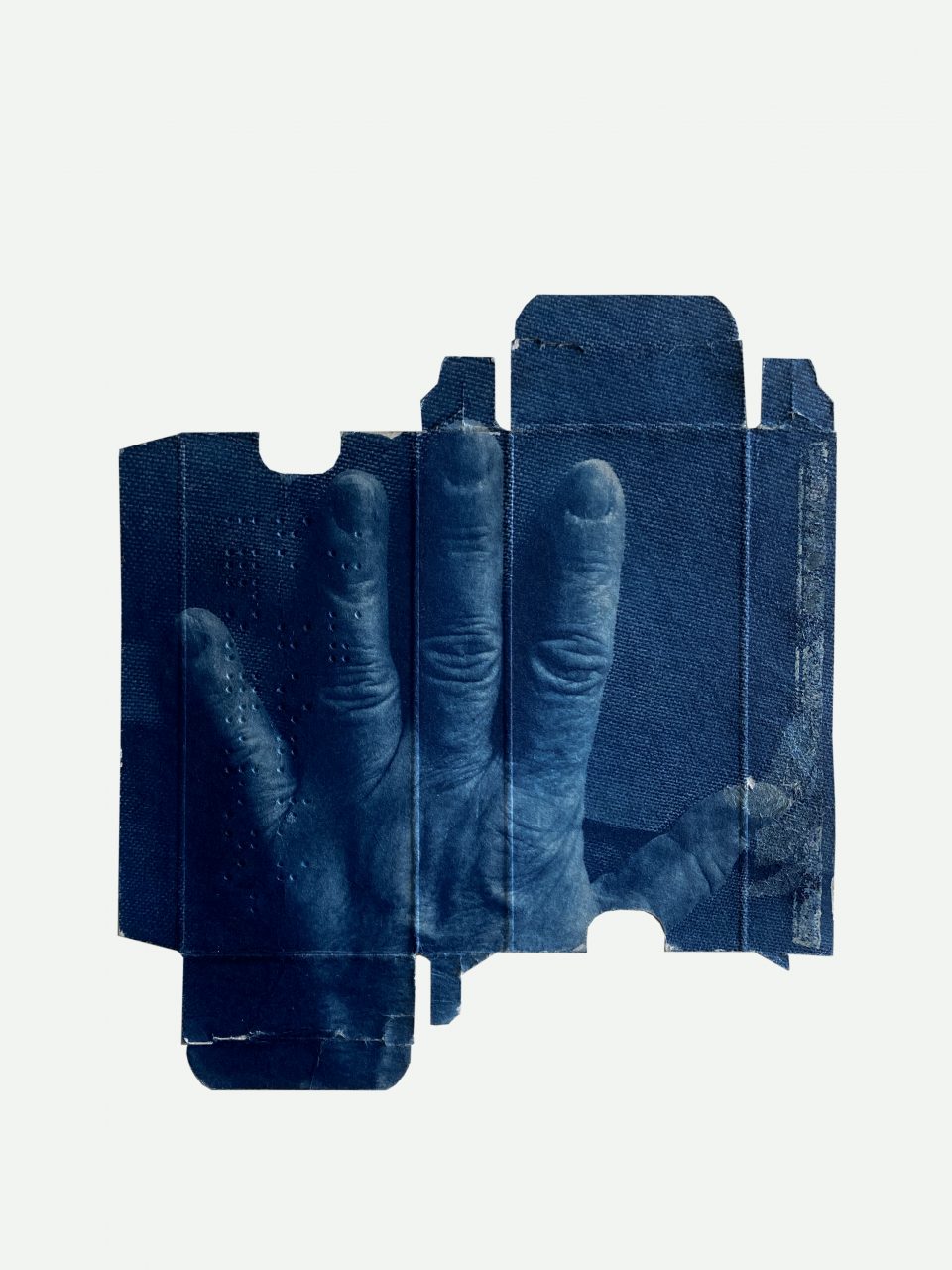
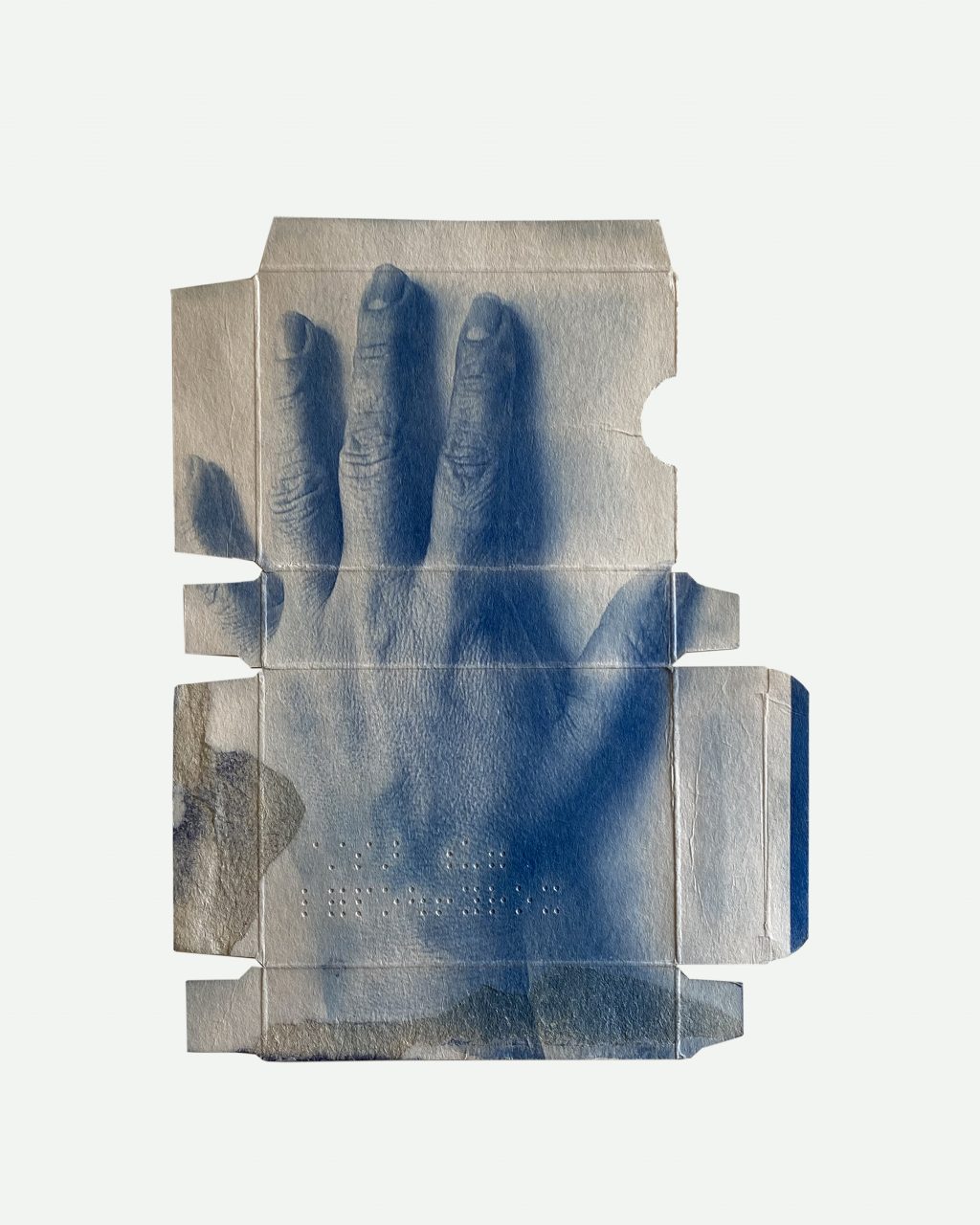
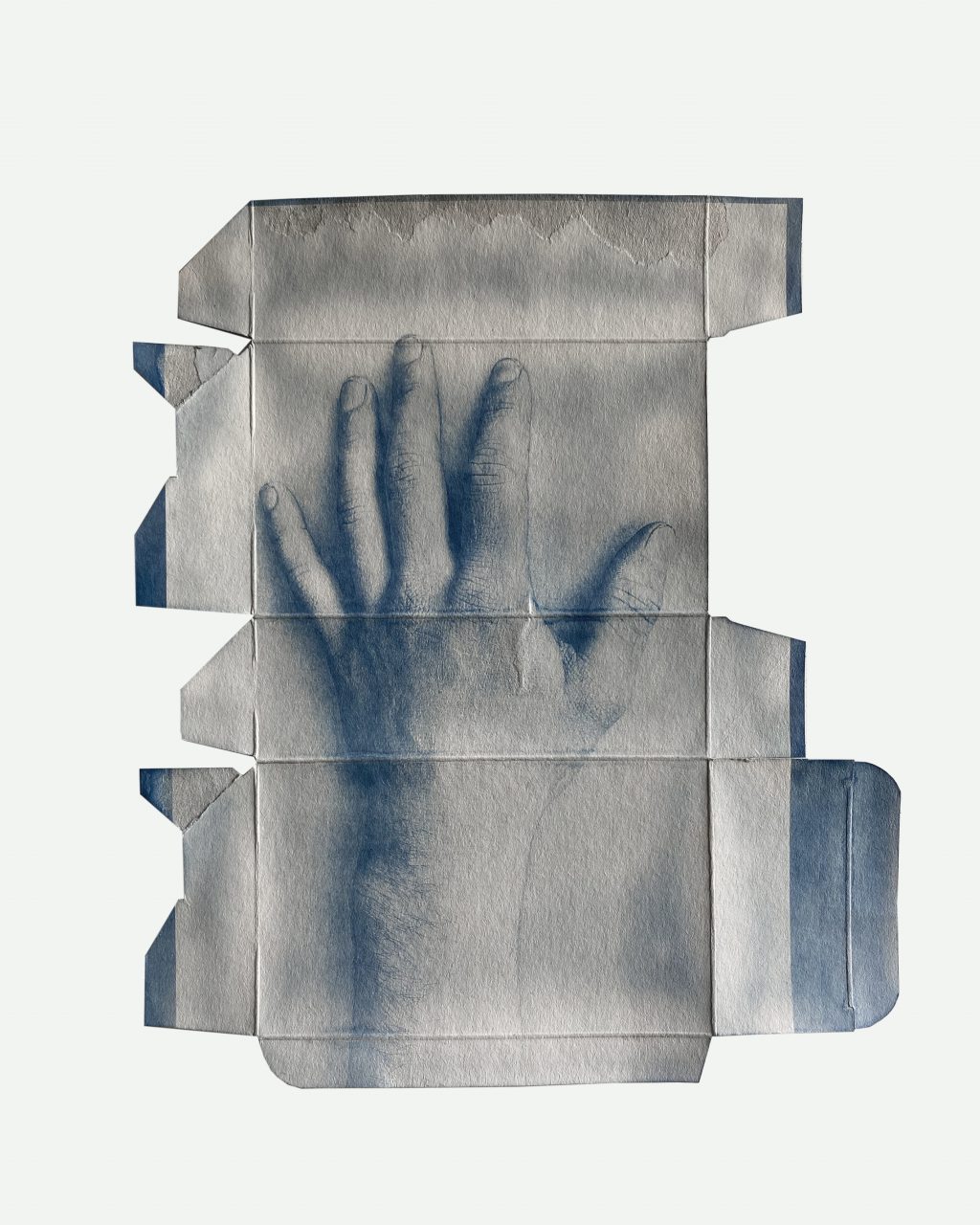
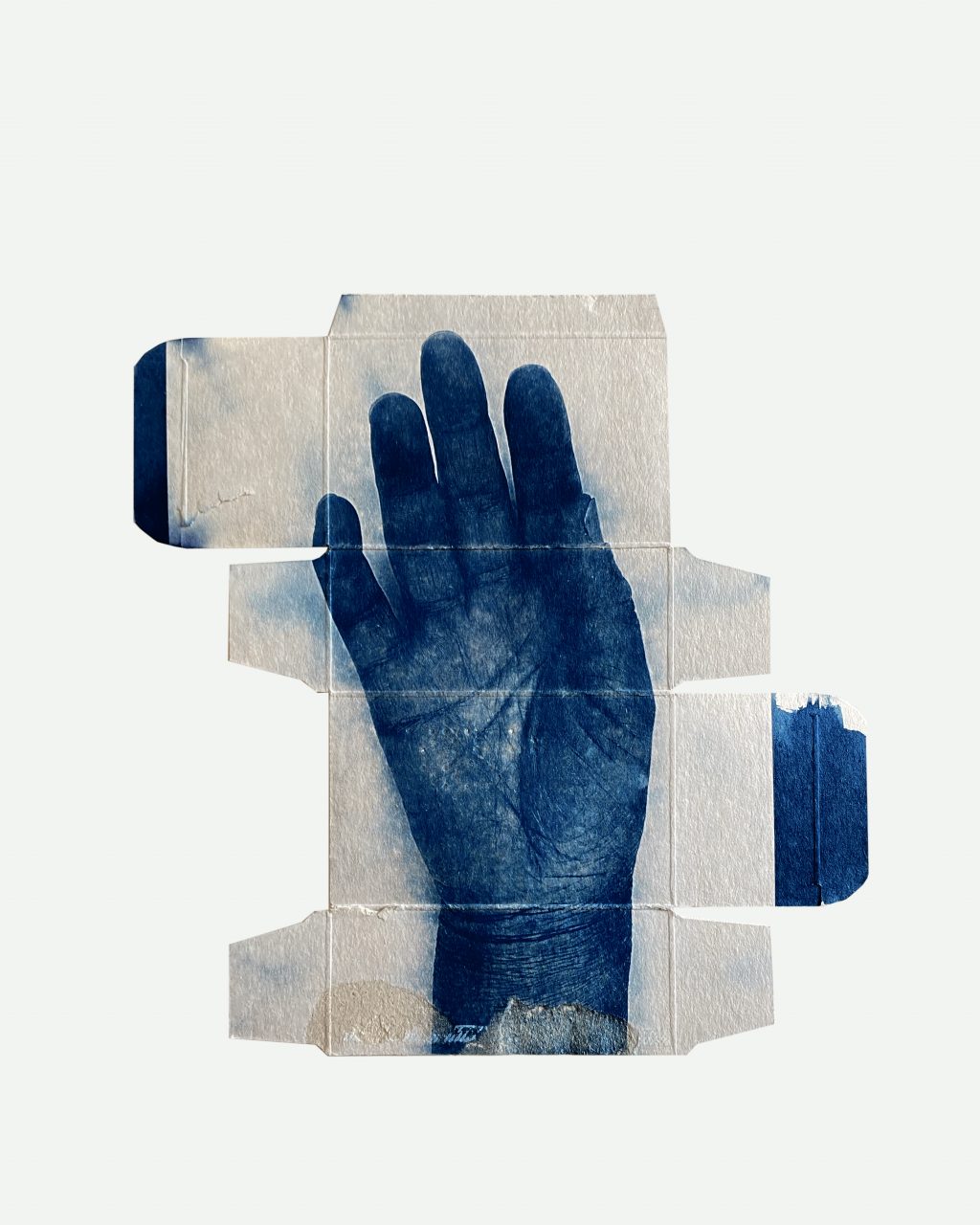

Born in Colombia in 1964, with a degree from the School of Fine Arts of the Universidad Nacional (Bogotá), Berta Ibanez lives and works in France since 2000.
In the early 90s, she worked and exhibited with several artists’ collectives. At the same time, she worked as an art teacher in a middle school in the Colombian capital. Today she explores old photographic processes such as cyanotype, anthotype,vand chlorophyll printing. Her work has been exhibited in galleries in Denver, Budapest, Arles, and Barcelona.
Born in Colombia in 1964, with a degree from the School of Fine Arts of the Universidad Nacional (Bogotá), Berta Ibanez lives and works in France since 2000.
In the early 90s, she worked and exhibited with several artists’ collectives. At the same time, she worked as an art teacher in a middle school in the Colombian capital. Today she explores old photographic processes such as cyanotype, anthotype,vand chlorophyll printing. Her work has been exhibited in galleries in Denver, Budapest, Arles, and Barcelona.
